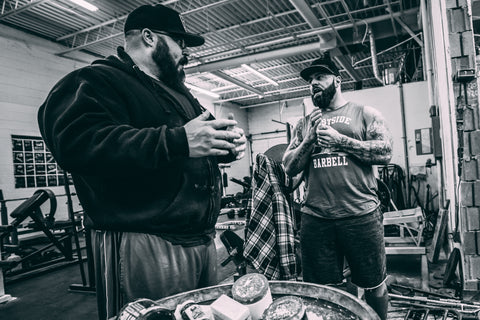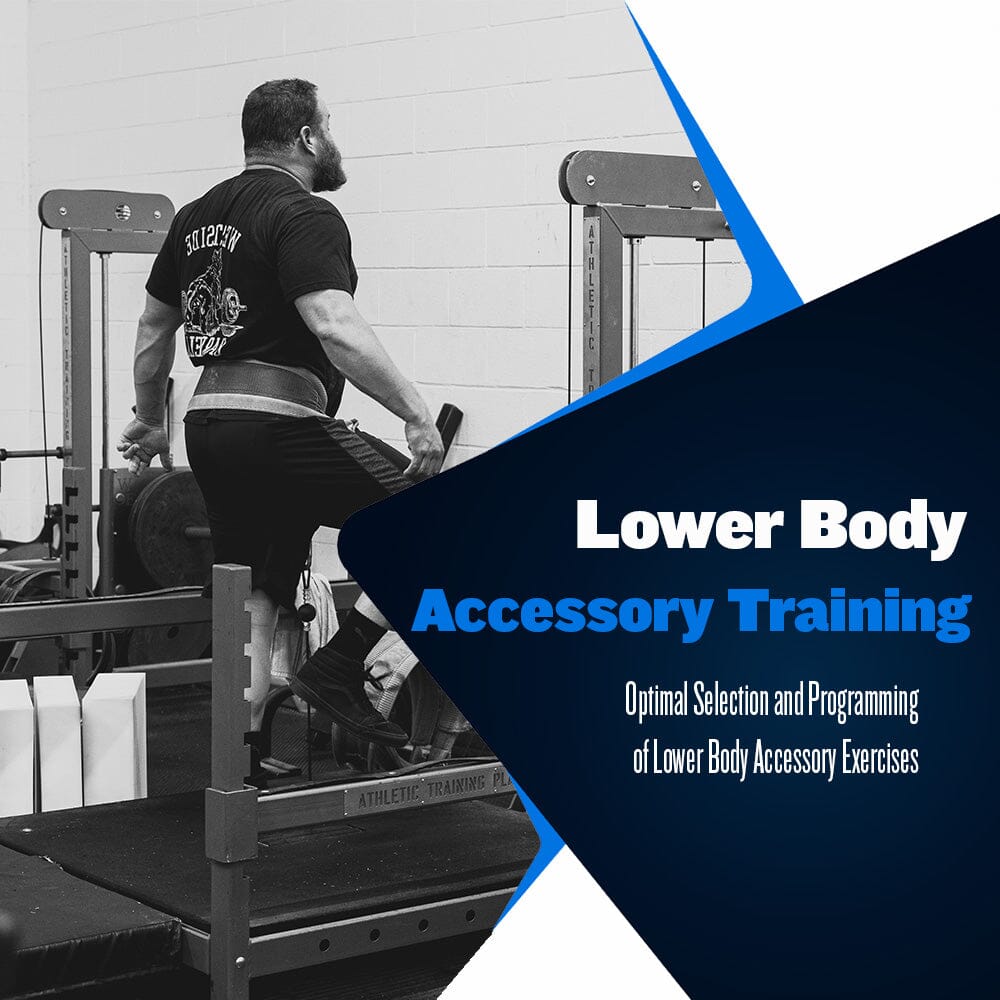Starting Conjugate: Lower Body Accessory Training

Developing lower body strength and muscle mass is critical to the success of all athletes. At Westside, we train the lower body twice weekly, one day dedicated to absolute strength development and the other to explosive power development. While the main exercises for each day differ depending on a specific training goal, the goal of accessory work is always the same - get bigger and stronger.
During each lower body training day, we will perform accessory exercises immediately after the main lift(s). These exercises are intended to directly target the muscle groups of the lower body to improve strength, muscle mass, and work capacity. As an athlete, the end goal is to use these exercises to become stronger overall, resulting in increased strength in the squat, bench, and deadlift, along with improved athletic performance.
However, the effectiveness of your accessory exercise training will depend on your ability to select the right exercises and assign appropriate set and rep ranges to ensure each exercise is effective. The ability to design and execute optimal accessory exercise training regularly will tremendously affect strength and work capacity levels.
When it comes to developing lower body strength to improve squat and deadlift ability, lower body accessory training plays a tremendous role. Accessory training allows us to immediately address our weak points while continuing to build our strongest ones. With the right accessory exercise plan in place, we build strength in a stair-step manner and add another layer of detraining prevention to our training.
Here’s how we build a lower body accessory training plan at Westside Barbell:
Accessory Exercise Selection
Selecting exercises is the first step to building a lower body accessory training plan. At Westside, we choose exercises to target all lower body muscle groups involved in the squat and deadlift, with a bias towards exercises that target identified weaknesses. While immediately addressing weak muscle groups is essential, we do not want to do so at the cost of neglecting the training of stronger muscle groups.
For instance, if an athlete is dealing with weak glutes and hamstrings, we will increase the amount of hamstring-focused accessory exercises selected. However, we will still ensure other muscle groups, such as the glutes, hip flexors, quads, and calves, are appropriately trained. Here is an example of optimal exercise selection to address weak glutes and hamstrings:
Exercise 1 - Romanian Deadlift
Exercise 2 - Goblet Squat
Exercise 3 - Inverse Curl
Exercise 4 - Reverse Hyper
Exercise 5 - Standing Abs
As you can see, the first accessory exercise selected is the Romanian deadlift, which will directly target the glutes and hamstrings. Next, goblet squats will be performed to ensure we train the anterior legs appropriately. While this exercise is biased towards the anterior chain, the glutes and hamstrings also benefit. The Inverse Curl will again specifically target the glutes and hamstrings, as will the Reverse Hyper. Then, we end the day with ab training as usual.
When building an accessory exercise training plan for a lower body training day, we want to keep the total exercises limited to 3-5 movements, including abdominal training. When deciding how many accessory exercises to include during a training day, we consider our level of fatigue going into the training day along with the expected level of fatigue after the main exercise is performed.
By regulating the number of exercises we select for each training day we ensure that training is optimal and that recovery times remain predictable. We do not want to perform every lower body accessory exercise we can think of, just the ones we need based on our current strengths and weaknesses.
Accessory Exercise Volume
Once we have selected the appropriate accessory exercises, we will assign set and rep schemes to each exercise. Unlike our main exercises, where we typically perform a max or dynamic effort exercise, accessory training involves using the repeated effort method. This strength training method calls for lifting submaximal weights for multiple reps (typically five or more) and sets.
Repeated effort method-based training aims to achieve adequate levels of hypertrophy, resulting in improved strength, muscle mass, and work capacity. Without the right amount of accessory exercise training volume, our ability to achieve these goals would be severely limited.
As far as sets go, we will typically perform each exercise for 3-5 sets, depending on the rep count. Reps per set will depend on the exercise. We will typically perform 4-5 sets of 5-8 or 8-10 repetitions for multi-joint exercises. We will typically perform 3-4 sets of 10-12, 12-15, 15-20, or 20+ repetitions for a single joint exercise, depending on the exercise.
These set and rep counts ensure optimal levels of volume and intensity are achieved based on the differences in training weight used when performing multi-joint versus single-joint exercises. Here are the optimal set and rep counts for each of the accessory exercises listed above:
Exercise 1 - Romanian Deadlift, 5 x 5-8 reps
Exercise 2 - Goblet Squat, 3 x 8-10 reps
Exercise 3 - Inverse Curl, 4 x AMRAP
Exercise 4 - Reverse Hyper, 4 x 15-20 reps
Exercise 5 - Standing Abs, 4 x 25-30 reps
As you can see, we adequately address multiple lower-body muscle groups while focusing on glute and hamstring-specific exercises. This is reflected in our exercise selection and the volume level assigned to each exercise.
Changing the Plan
While this plan will help to alleviate glute and hamstring weakness, we cannot expect to use this exact accessory exercise training plan for each lower body training day. Performing a diverse selection of accessory exercises is critical to avoiding accommodation, so changing your accessory exercise training a bit is imperative for each training session.
There is no problem using many of the same exercises repeatedly, so long as you change how you program them. For instance, you can change the day the exercise is performed, how the exercise is performed (add specialty bar or accommodating resistance), or the amount of training volume assigned to the exercise.
We want to change things enough to keep the movements challenging and effective but not so much that the training becomes less optimized or loses focus on the primary training objectives. Accessory exercise training seeks to increase the strength of weak muscle groups while maintaining or increasing the strength of all other muscle groups.
As much as it is important to change things up with training, it is just as important to keep training focused and optimal. Following the advice above, you can make the correct adjustments to keep your accessory training effective while avoiding losing sight of your immediate and long-term training goals.
Sources:
Simmons, L. (2007). Westside Barbell Book of Methods. Westside Barbell.
Verkhoshansky, Y., & Siff, M. C. (2009). Supertraining. Verkhoshansky.
Zatsiorsky, V. M., & Kraemer, W. J. (2006). Science and Practice of Strength Training. Human Kinetics





